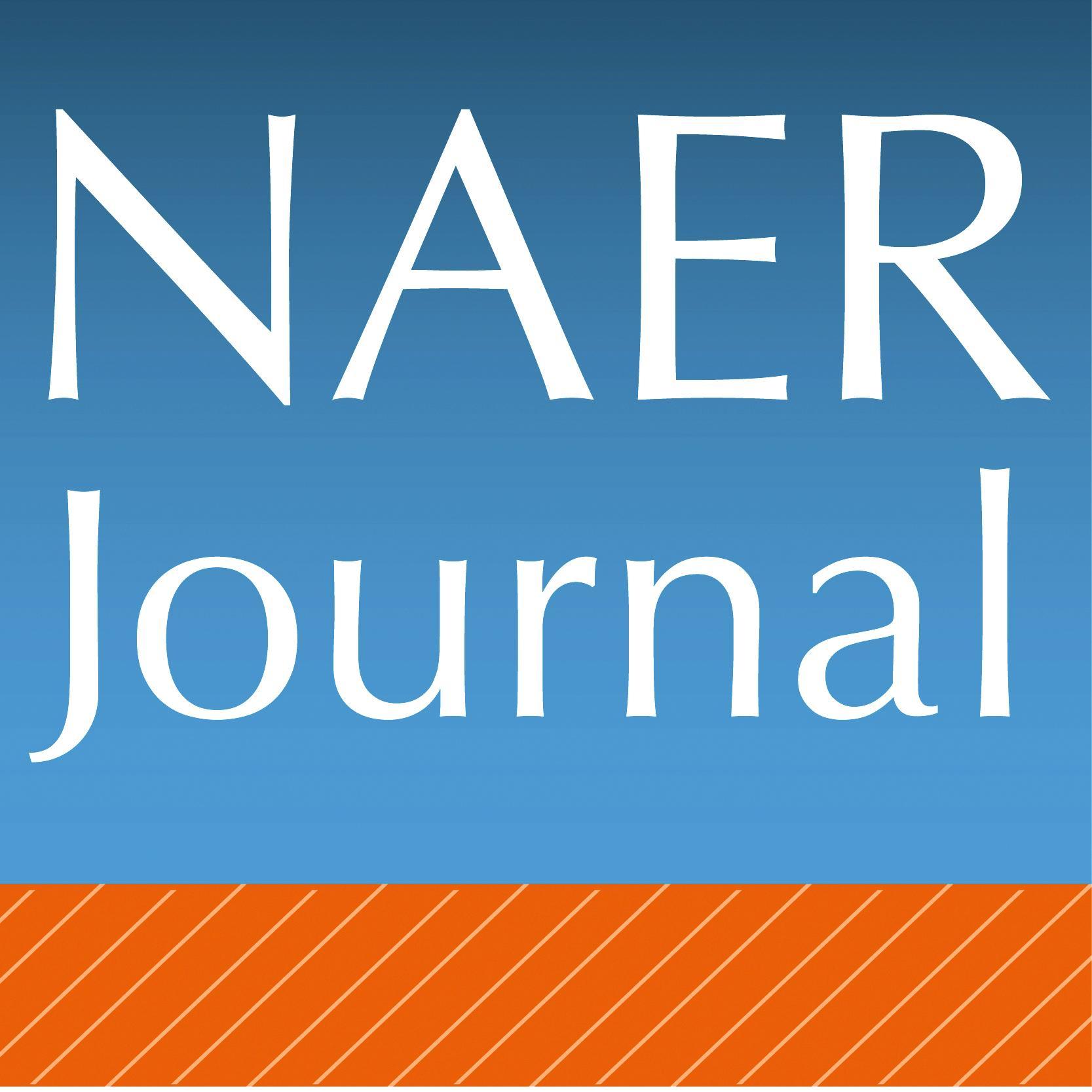Percepciones en torno a una educación remota y a una educación híbrida universitaria durante la pandemia de la COVID-19: estudio de caso
Resumen
El presente artículo tiene como propósito realizar un estudio sobre las percepciones en torno a una educación remota y a una educación híbrida en la educación superior. El estudio de caso de un programa universitario de posgrado se articula con el enfoque de la investigación basada en el diseño para analizar percepciones sobre una educación remota en tiempos de pandemia e identificar factores claves de éxito para una nueva normalidad educativa a partir de los microciclos de la fase de implementación. Entre los hallazgos, se reconoce que una educación remota respondió a la emergencia de la pandemia y se identificaron factores claves de éxito tales como la temporalización del proceso de enseñanza y aprendizaje, la docencia sincrónica, el diseño tecnopedagógico de los entornos virtuales de aprendizaje, y la transformación digital universitaria. Estos resultados permiten resignificar el concepto tradicional de educación híbrida incorporando fortalezas de la educación remota, y reposicionándola como una modalidad de estudio estratégica para una nueva normalidad educativa que recupere progresivamente la presencialidad y expanda el aprendizaje de los estudiantes. La presente investigación contribuye a plantear pistas desde la educación híbrida hacia una renovada educación postpandemia.
Descargas
-
Resumen4608
-
PDF2613
-
PDF Kindle2613
Citas
Ally, M., & Prieto-Blásquez, J. (2014). What is the future of mobile learning in education? RUSC. Universities and Knowledge Society Journal, 142-151. http://dx.doi.org/10.7238/rusc.v11i1.2033
Ashour, S., El-Refae, G. A., & Zaitoun, E. A. (2021). Post-pandemic Higher Education: Perspectives from University Leaders and Educational Experts in the United Arab
Emirates. Higher Education for the Future, 8(2), 219–238. https://doi.org/10.1177/23476311211007261
Balladares-Burgos, J. (2021). Educación digital y formación del profesorado en modalidades semipresencial y virtual (b-learning y e-learning). Estudios de caso. Corporación Editora Nacional.
Balladares-Burgos, J. (2020). Una educación remota en tiempos de contingencia académica. Andina, 2, 29-35. https://bit.ly/3wPgqjZ
Balladares-Burgos, J. (2018). La investigación educativa en el profesorado universitario: hacia la Investigación basada en el Diseño. Revista Andina de Educación, 1(1), 30-34. https://doi.org/10.32719/26312816.2018.1.1.4
Balladares-Burgos, J. (2018). Blended Learning and digital education of university teaching staff. Revista Cátedra. 1(1), 53-69. https://doi.org/10.29166/catedra.v1i1.762
Balladares-Burgos, J. (2017). Una ética digital para las nuevas generaciones digitales. Revista PUCE, 104. https://doi.org/10.26807/revpuce.v0i0.81
Bonk, C., & Graham, C. (2004). Handbook of blended learning. Pfeiffer.
Bordoloi, R., Das, P. & Das, K. (2021). Perception towards online/blended learning at the time of Covid-19 pandemic: an academic analytics in the Indian context. Asian Association of Open Universities Journal, 16(1), 41-60. https://doi.org/10.1108/AAOUJ-09-2020-0079
Cabauatan, R., Uy, C., Manalo, R & Castro, B. de. (2021). Factors Affecting Intention to Use Blended Learning Approach in the Tertiary Level: A Quantitative Approach. Higher Education for the Future, 8(2), 239-255. https://doi.org/10.1177/23476311211011934
Carius, A.C. (2020). Network Education and Blended Learning: Cyber University concept and Higher Education post COVID-19 Pandemic. Research, Society and Development, 9(10), https://doi.org/10.33448/rsd-v9i10.9340
Carrillo, M., Padilla, J., Rosero, T. y Villagómez, M.S. (2009). La motivación y el aprendizaje. Alteridad. Revista de Educación, 4(2), 20-32. https://bit.ly/3HicnBv
Cobo, C., y Moravec, J. (2011). Aprendizaje Invisible. Hacia una nueva ecología de la educación. Publicacions i Edicions de la Universitat de Barcelona.
Cruz-Sánchez, I. & García-García, C. (2020). Tendencias de investigación en comunicación-educación y tecnologías digitales. Virtualis, 11(20), 33-53. https://bit.ly/3HqGdDE
Del Moral, E. & Villalustre, L (2015). MOOC: Ecosistemas digitales para la construcción de PLE en la educación superior. RIED. Revista Iberoamericana de Educación a Distancia. 18(2), 87-117. https://doi.org/10.5944/ried.18.2.13353
Del Moral, E. & Villalustre, L (2010). Formación del profesor 2.0: desarrollo de competencias tecnológica para la escuela 2.0. Revista Miscelánea de Investigación, 23, 59-70. https://bit.ly/3HlGAzB
García-Peñalvo, F. (2020). Modelo de referencia para la enseñanza no presencial en universidades presenciales. Campus Virtuales, 9(1), 41-56. https://bit.ly/3cecIXx
García-Ruiz, R. & Pérez Escoda, A. (2021). La competencia digital docente como clave para fortalecer el uso responsable de Internet. Campus Virtuales, 10(1), 59-71. https://bit.ly/3Dk4JEg
Gibelli, T. (2014). La investigación basada en diseño para el estudio de innovación en educación superior que promueve la autorregulación de aprendizaje utilizando TIC. Congreso Iberoamericano de Ciencias, Tecnología, Innovación y Educación, 2-16. https://bit.ly/3Cgiqmo
González, N. (2020). Educación superior ante la pandemia de coronavirus (COVID-19). Revista De Identidad Universitaria, 1(10), 19-21. https://bit.ly/3wPfkEL
Heinze, A., & Procter, A. (2004). Reflections on the Use of Blended Learning.
Education in a Changing Environment conference proceedings. University of Salford. https://bit.ly/3CjmCBQ
Hernández, G., Sánchez, P., Rodríguez, E., Caballero, R. & Martínez, M. (2014). Un entorno b-learning para la promoción de la escritura académica de estudiantes universitarios. Revista Mexicana de Investigación Educativa, 19(61), 349-375. https://bit.ly/30zIsUF
Herrera, M., Amuchástegui, G. & Balladares, J. (2020). La educación superior ante la pandemia. Revista Andina de Educación, 3(2), 2-4. https://doi.org/10.32719/26312816.2020.3.2.0
Hodges, C. Moore, S., Lockee, B., Trust, T. & Bond, A. (2020). The Difference Between Emergency Remote Teaching and Online Learning. Educause. https://bit.ly/3ou010o
Ibáñez, F. (2020). Educación en línea, Virtual, a Distancia y Remota de Emergencia, ¿cuáles son sus características y diferencias? Observatorio. Instituto para el Futuro de la Educación. Tecnológico de Monterrey. https://bit.ly/3kziJ5C
Islas, C. & Carranza, M. (2017). Ecosistemas digitales y su manifestación en el aprendizaje: análisis de la literatura. RED. Revista de Educación a Distancia, 55(9). http://dx.doi.org/10.6018/red/55/9
Jaramillo-Baquerizo, C., Valcke, M., Vanderlinde, R. & Vansteenkiste, M. (2017) The impact of an innovative blended-learning professional development program in higher education on motivation to transfer learning. INTED2017 Proceedings, 4813-4819.
Johnson, L., Adams Becker, S., Cummins, M., Estrada, V., Freeman, A., & Hall, C. (2016). NMC
Horizon Report: 2016 Higher Education Edition. The New Media Consortium. https://bit.ly/3HlGTuf
Llorens, F. & Fernández, A. (2020). Coronavirus, la prueba de algodón de la universidad digital. Universídad. https://bit.ly/3wOZkCB
López, L. (2020). Educación remota de emergencia, virtualidad y desigualdades: pedagogía en tiempos de pandemia. 593 Digital Publisher CEIT, 5(5-2), 98-107. https://doi.org/10.33386/593dp.2020.5-2.347
Moravec, J. (ed.) (2013). Knowmad Society. Education Future.
Nijakowski K., Lehmann A., Zdrojewski J., Nowak M. & Surdacka A. (2021). The Effectiveness of the Blended Learning in Conservative Dentistry with Endodontics on the Basis of the Survey among 4th-Year Students during the COVID-19 Pandemic. International Journal of Environmental Research and Public Health. 18(9), 4555. https://doi.org/10.3390/ijerph18094555
Ortega, D., Acosta, C.L., Ortega, F. & Díaz, Y. (2021). Retos de la educación contemporánea ante la virtualización y ubicuidad de los entornos sociales. Revista Conrado, 17(78), 32-39. https://bit.ly/3CkjEga
Ozollo, F. (2021). Ecosistemas virtuales de aprendizajes: una telaraña de relaciones.
Universidad Nacional de Cuyo.
Pérez, D. (2017). Educación disruptiva: nuevas formas de transformar la educación. Revista Digital INESEM. https://bit.ly/2YQCePy
Pardo, H. & Cobo, C. (2020). Expandir la universidad más allá de la enseñanza remota de emergencia Ideas hacia un modelo híbrido post-pandemia. Outliers School.
Prensky, M. (2001). Digital Natives, Digital Immigrants. On the Horizon, 9(5), MCB University Press. https://bit.ly/3qTxK6v
Quintián, S.P. & González, J. (2021). El diseño de ambientes Blended-Learning, retos y oportunidades. Educación y Educadores, 23(4), 659-682. http://doi.org/10.5294/edu.2020.23.4.6
Richey, R. (ed.) (2013). Encyclopedia of Terminology for Educational Communications and Technology. Springer.
Saboowala, R. & Manghirmalani, P. (2021). Blended Learning: The New Normal Teaching – Learning Pedagogy Post COVID-19 Pandemic. Research Square, Preprint versión. https://doi.org/10.21203/rs.3.rs-410211/v1
Sangrà, A. (coord.) (2020). Decálogo para la mejora de la docencia online. Propuestas para educar en contextos presenciales discontinuos. Editorial UOC.
Sosa, M.J., Guerra, J. & Cerezo, M. (2021). Flipped Classroom in the Context of Higher Education: Learning, Satisfaction and Interaction. Education Sciences, 11, 416. https://doi.org/10.3390/educsci11080416
Torres-Carrión, P. (2021). Ser maestro en tiempos de pandemia. UTPL.
The Design-Based Research Collective. (2003). Design-Based Research: An Emerging Paradigm for Educational Inquiry. Educational Researcher, 32(1), 5-8.
The Learning Factor (2020). Enseñanza Remota de Emergencia. Educacción.
UNESCO (2019). Indicadores de la UNESCO sobre la universalidad de internet. Unesco.
Valenzuela, B., Guillén, M., Medina, A. & Rodríguez, P. (coords.) (2017). Educación y Universidad ante el Horizonte 2020, 2, Universidad de Sonora.
Valverde-Berrocoso, J., & Balladares, J. (2017). Enfoque sociológico del uso del B-learning en la educación digital del docente universitario. Sophia: colección de Filosofía de la Educación, 23(2), 123-140. https://doi.org/10.17163/soph.n23.2017.04
Wang, F. & Hannafin, M. (2005). Design-based research and Technology-Enhanced Learning Environments. ETR&D, 53(4), 5-23. https://doi.org/10.1007/BF02504682
Woodall, D. (2012). Blended Learning Strategies. Selecting the best instructional method. Skillsoft Corporation. https://bit.ly/3HqEMW7
Yánez, P. (2016). El proceso de aprendizaje. Fases y elementos del aprendizaje. Revista San Gregorio, 70-81. https://bit.ly/3opuDjE
Derechos de autor 2021 Jorge Balladares Burgos

Esta obra está bajo una licencia internacional Creative Commons Atribución-NoComercial-CompartirIgual 4.0.
Aquellos autores que tengan publicaciones con esta revista aceptan los términos siguientes :
-
Los autores conservarán sus derechos de autor y garantizarán a la revista el derecho de primera publicación de su obra, el cuál estará simultáneamente sujeto a la Licencia Creative Commons Atribución no comercial compartir por igual 4.0 Internacional que permite compartir, copiar y redistribuir el material en cualquier medio o formato y adaptar, remezclar, transformar y construir sobre el material en los siguientes términos:
Reconocimiento - Debe dar el crédito apropiado, proporcionar un enlace a la licencia, e indicar si se han realizado cambios. Puede hacerlo de cualquier manera razonable, pero no de una manera que sugiere que el licenciante o su uso hace suya. No comercial - No puede utilizar el material con fines comerciales. Compartir bajo la misma - Si remezcla, transformar o crear sobre el material, se debe distribuir sus contribuciones bajo la misma licencia que el original. -
Los autores podrán adoptar otros acuerdos de licencia no exclusiva de distribución de la versión de la obra publicada (p. ej.: depositarla en un archivo telemático institucional o publicarla en un volumen monográfico) siempre que se indique la publicación inicial en esta revista.
-
Se permite y recomienda a los autores difundir su obra a través de Internet (p. ej.: en archivos telemáticos institucionales o en su página web) antes y durante el proceso de envío, lo cual puede producir intercambios interesantes y aumentar las citas de la obra publicada. (Véase El efecto del acceso abierto).
-
En cualquier caso, el Equipo Editorial entiende que las opiniones vertidas por los autores son de su exclusiva responsabilidad.
















